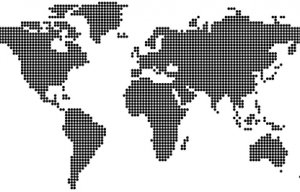
Global smart coatings market valued at $2,257.5 million in 2017
Requirements are growing as new applications emerge and manufacturers strive to increase comfort, improve safety and reduce weight.

1st June 2022
Innovation in Textiles
|
United Kingdom
Demand for technical textiles in the automotive market is growing as new applications emerge and manufacturers strive to increase comfort, improve safety and reduce weight, according to Profiles of five major automotive technical textiles manufacturers, a 20-page report from the global business information company Textiles Intelligence.
The average weight of textile materials now used in a mid-size car is 30kg, 50% more than the 20kg used in 2000. One driving force behind the rise has been a focus on lowering weight in order to achieve higher fuel efficiency and reduce greenhouse gas emissions, in response to government directives.
Technical textiles offer significant opportunities for reducing weight. For example, the use of components made from Lineo’s FlaxPreg sandwich panel composites has been proven to achieve a weight reduction of 50% compared with traditional components made from glass fibre and polyurethane. Also, the composites offer a cost advantage of around 5%. The composites are designed for manufacturing a number of automotive interior components, including door panels, instrument panels, load floors, roof trim and seat backs.
Similarly, the use of ELeather, an artificial leather material for automotive interior components, achieves a weight reduction of 40% compared with conventional leather. Also, the material boasts a number of high-performance attributes which provide customers with the benefit of a more efficient, less expensive and longer lasting material.
Another driving force behind the rise in demand for technical textiles in automotive applications is a need for improved acoustic comfort as the popularity of new energy vehicles (NEVs) grows. In particular, sounds which were previously masked by the noise of the internal combustion engine (ICE) in standard ICE vehicles are clearly audible in NEVs—much to the discomfort of the user.
To remedy this discomfort, Adler Pelzer Group (APG) provides full system engineering and noise, vibration and harshness (NVH) packages to customers such as Tesla and, more recently, it has redefined its methods for developing NEV acoustics in a package which it calls EVO (evolution of automotive acoustics).
In fact, APG believes that improving the acoustic comfort of automotive vehicles represents a significant opportunity, so much so that it has acquired the Acoustics business of STS Group and the Acoustics and Soft Trim (AST) business of Faurecia.
Meanwhile, Autoliv and Global Safety Textiles (GST) have benefited from rising demand in the airbag sector and, in particular, rising demand for new innovative products. For example, Autoliv has developed an exterior airbag for autonomous vehicles which covers the front of the vehicle when inflated in order to protect vulnerable road users such as cyclists, motorcyclists and pedestrians.
Despite the promise shown by increasing demand for technical textiles in the automotive market, however, suppliers of technical textile products to the automotive industry were severely impacted in 2020 and 2021 by a slowdown in the market caused by the COVID-19 pandemic. They were also impacted by supply chain issues, increased freight and transportation costs, higher energy prices, and shortages of supercapacitors.
Furthermore, the ongoing military conflict following Russia’s invasion of Ukraine has led to further price increases and supply chain disruptions in 2022 and, as a result, it seems unlikely that these suppliers will get back during the year to the performances they enjoyed in 2019.
This report is available to purchase on Innovation by following the link below.
Profiles of five major automotive technical textiles manufacturers

Business intelligence for the fibre, textiles and apparel industries: technologies, innovations, markets, investments, trade policy, sourcing, strategy...
Find out more